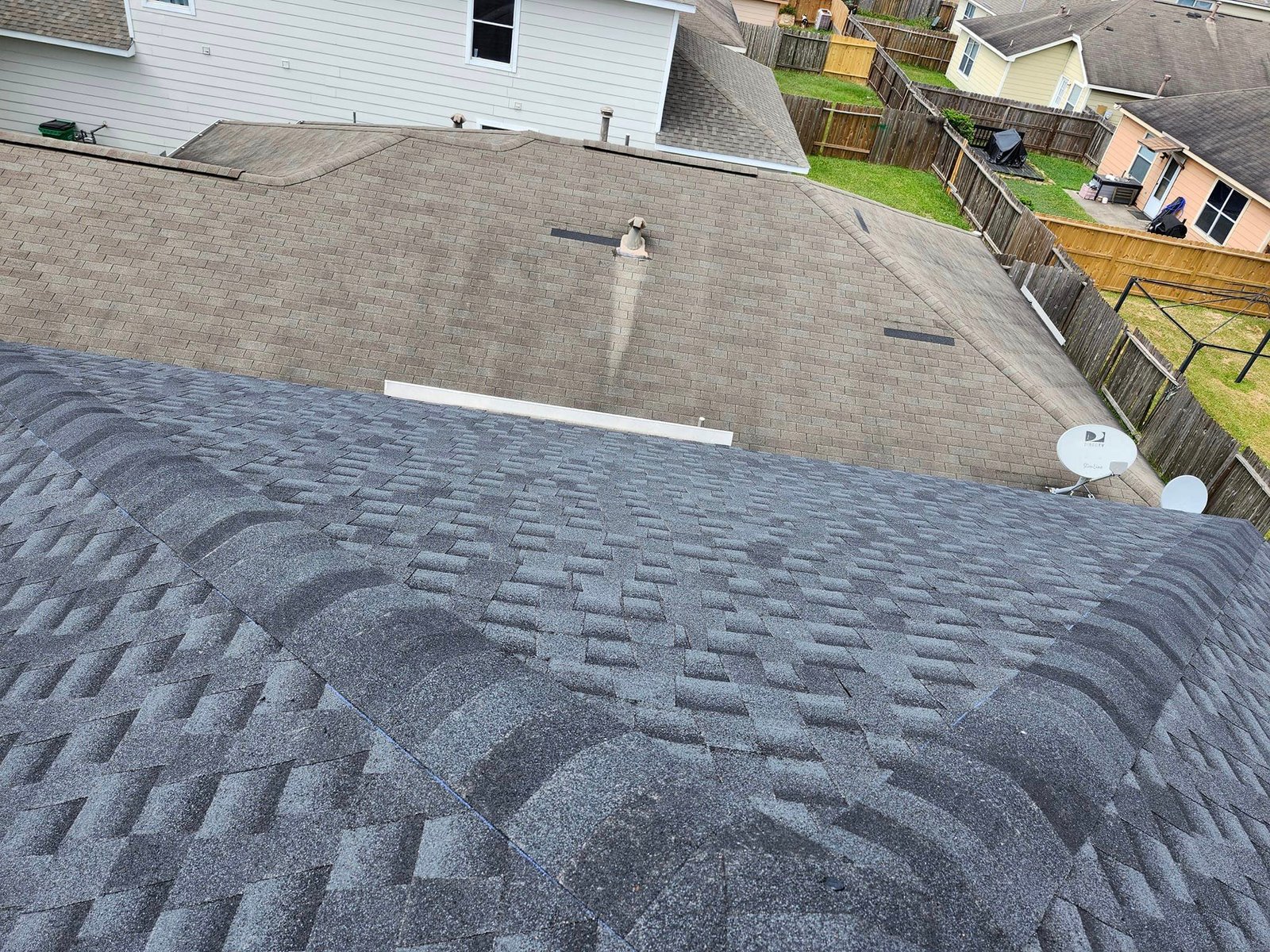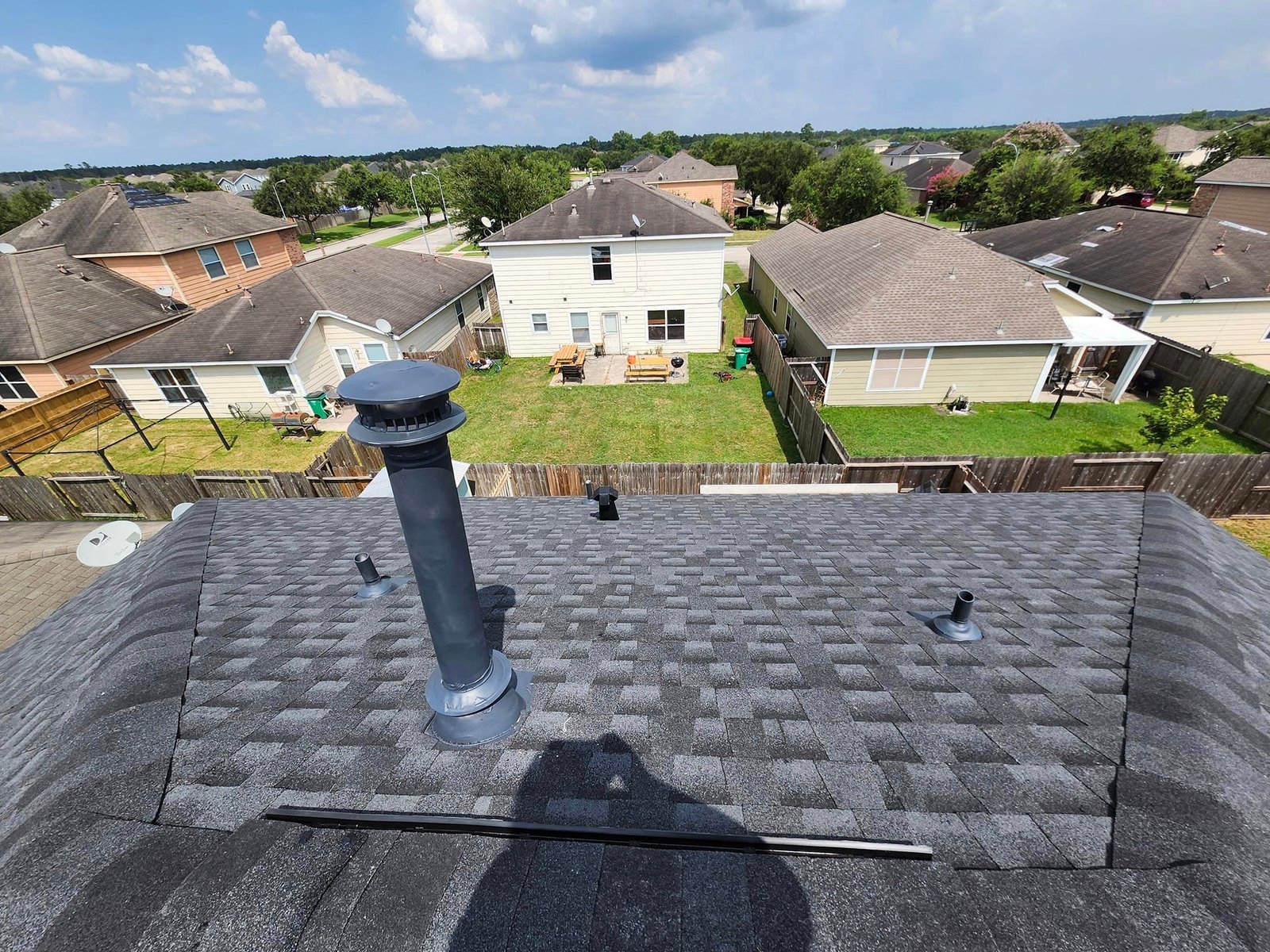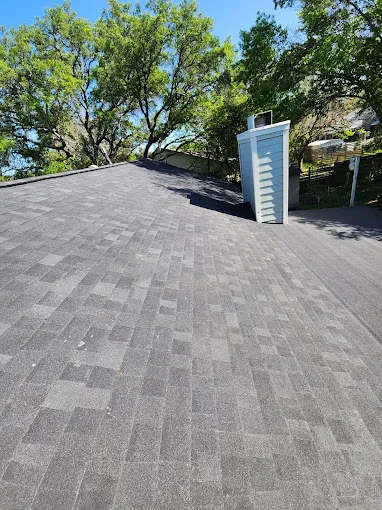Living in Houston, you know better than anyone that the weather here can be unpredictable. One minute it’s sunny, and the next, you’re hunkering down as a fierce storm rolls through. Houston’s weather, with its intense heat, high humidity, and frequent storms, can take a serious toll on your roof. That’s why it’s crucial to keep an eye on your roof’s condition and make sure it’s ready to withstand whatever Mother Nature throws its way.
In this article, we’ll dive into the top signs that your roof might need some attention before the next storm hits. Don’t wait until you’re dealing with a leak or worse—catching these issues early can save you a lot of headaches down the line.
Missing or Damaged Shingles :
Hot summers and strong storms can cause shingles to crack, curl, or even get blown off entirely. If you notice any missing or damaged shingles on your roof, that’s a clear sign you need to take action. Shingles are your roof’s first line of defense against the elements, so when they’re compromised, it leaves your home vulnerable to water damage.
What to Do: Take a good look at your roof, especially after a storm. If you spot any shingles that are cracked, curled, or missing, it’s time to call a roofing professional. Replacing damaged shingles promptly can prevent more extensive damage from occurring.
Granules in Your Gutters
Shingles are coated with tiny granules that help protect them from the sun’s harsh UV rays. Over time, these granules can start to wear off, especially after heavy rain or hail. If you find granules in your gutters or downspouts, it’s a sign that your shingles are aging and may not be providing the protection your roof needs.
What to Do: Check your gutters regularly, particularly after a storm. If you’re seeing a lot of granules, it’s time to have a professional assess the condition of your shingles. They might recommend repairs or even a roof replacement if the damage is significant.
Leaks or Water Stains
Water stains on your ceiling or walls are a clear indication that your roof has a leak. In areas where heavy rain is common, a small leak can quickly turn into a big problem. Water can seep into your home, causing damage to your insulation, drywall, and even your electrical system.
What to Do: If you notice water stains, don’t wait—contact a roofing expert right away. They can locate the source of the leak and fix it before it causes further damage. Sometimes, a small patch job is all you need, but if the leak is severe, you might be looking at more extensive repairs.
Sagging Roof Deck
A sagging roof is a serious issue that needs immediate attention. This can be caused by a variety of factors, including water damage, excess weight from accumulated debris, or structural problems. Heavy rains and the weight of wet leaves or branches can put a lot of stress on your roof, leading to sagging.
What to Do: If you notice any areas of your roof that appear to be sagging, it’s essential to have it inspected right away. A sagging roof could indicate that the underlying structure is compromised, and ignoring it could lead to a roof collapse.
Damaged Flashing
Flashing is the material that’s placed around roof features like chimneys, vents, and skylights to prevent water from seeping in. Over time, flashing can become loose, cracked, or damaged, especially after intense storms. When flashing is compromised, it can allow water to penetrate your roof, leading to leaks and water damage.
What to Do: Inspect the flashing around any roof penetrations. If you see any cracks, rust, or gaps, it’s time to have it repaired or replaced. Properly functioning flashing is crucial for keeping your home dry during the rainy season.
Algae and Moss Growth
Humid climates are the perfect breeding ground for algae and moss. While a little bit of algae might not seem like a big deal, it can actually cause significant damage over time. Algae can eat away at your shingles, while moss can trap moisture against your roof, leading to rot and decay.
What to Do: Keep an eye out for any green or black streaks on your roof. If you notice algae or moss growth, it’s best to have your roof cleaned by a professional. They can remove the growth safely without damaging your shingles.

Increased Energy Bills
Have you noticed a spike in your energy bills? Your roof could be to blame. If your roof is damaged or not properly insulated, it can let cool air escape during the summer and warm air escape during the winter, making your HVAC system work harder to maintain a comfortable temperature.
What to Do: If your energy bills are higher than usual, it’s worth having your roof inspected. A roofing professional can check for issues like poor insulation, leaks, or ventilation problems that could be causing your energy costs to rise.
Sunlight Coming Through the Roof
If you go up to your attic and see sunlight shining through the roof, that’s a major red flag. Any gap that allows light to enter can also let in water, debris, and pests. Weather can be unforgiving, and even a small hole can turn into a big problem during a storm.
What to Do: Check your attic periodically, especially after a storm. If you notice any light coming through the roof, it’s crucial to have it repaired immediately. Sealing up these gaps will protect your home from the elements.
Age of the Roof
Roofs don’t last forever, and the age of your roof is a significant factor in determining whether it needs repairs. With constant exposure to sun, rain, and storms, the lifespan of your roof might be shorter than in other areas. Most roofs are designed to last 20-25 years, but if yours is approaching that age, it’s time to start thinking about repairs or even a replacement.
What to Do: If your roof is over 20 years old, have it inspected regularly. A professional can give you an honest assessment of its condition and help you plan for any necessary repairs or replacement.
Pooling Water
Flat or low-sloped roofs are especially prone to water pooling, but it can happen on any roof if there are drainage issues. After a heavy rain, you might notice water sitting on your roof instead of draining off. Pooling water can lead to leaks, mold, and even structural damage if it’s not addressed.
What to Do: After a storm, take a look at your roof to see if water is pooling anywhere. If you notice any areas where water isn’t draining properly, it’s important to have the issue fixed right away. Proper drainage is key to preventing water damage.
Protect Your Home Before the Next Houston Storm
Your roof is your home’s first line of defense against unpredictable weather. By keeping an eye out for these signs and addressing any issues promptly, you can protect your home from storm damage and extend the life of your roof. Don’t wait until it’s too late—take action now to ensure your roof is in top shape before the next storm hits.
Remember, regular roof maintenance and inspections can save you money in the long run by preventing more extensive damage. If you’re unsure about the condition of your roof or have noticed any of the signs mentioned above, it’s a good idea to reach out to a professional roofing contractor. They can assess your roof’s condition, make necessary repairs, and give you peace of mind knowing that your home is ready for whatever the weather throws at it.



